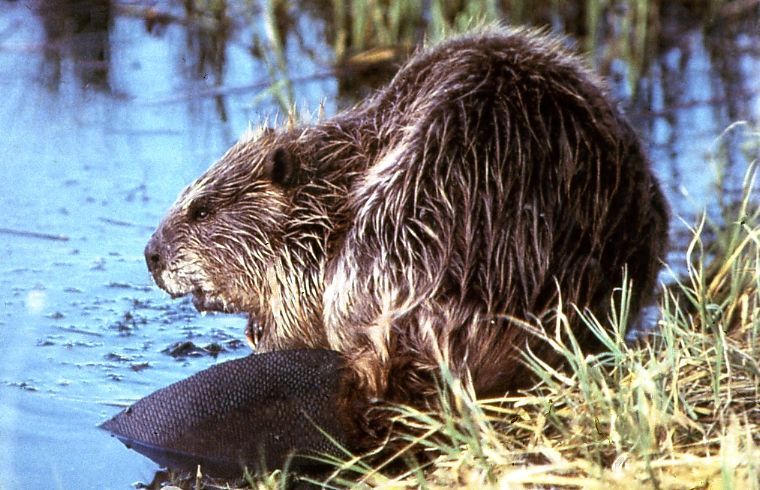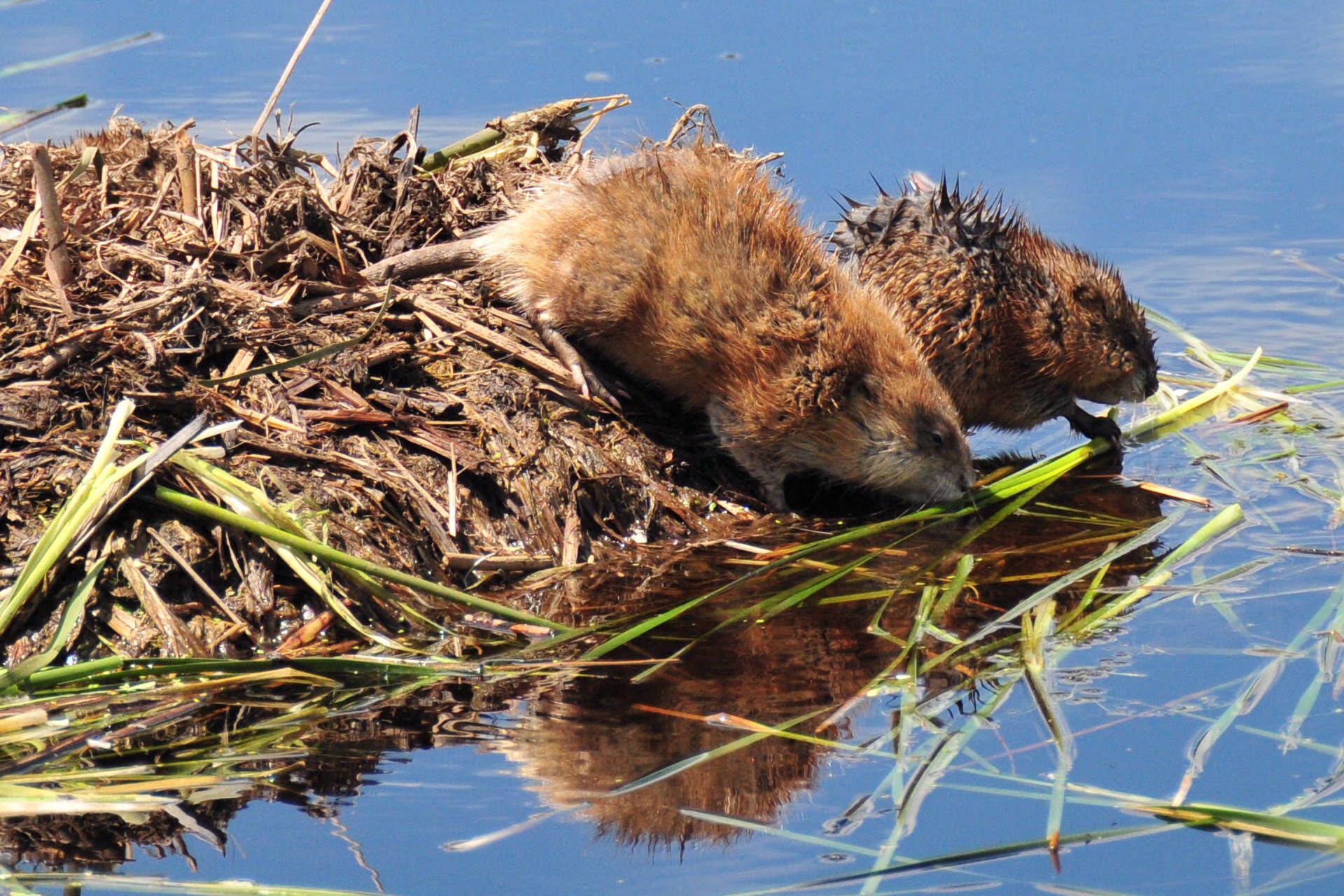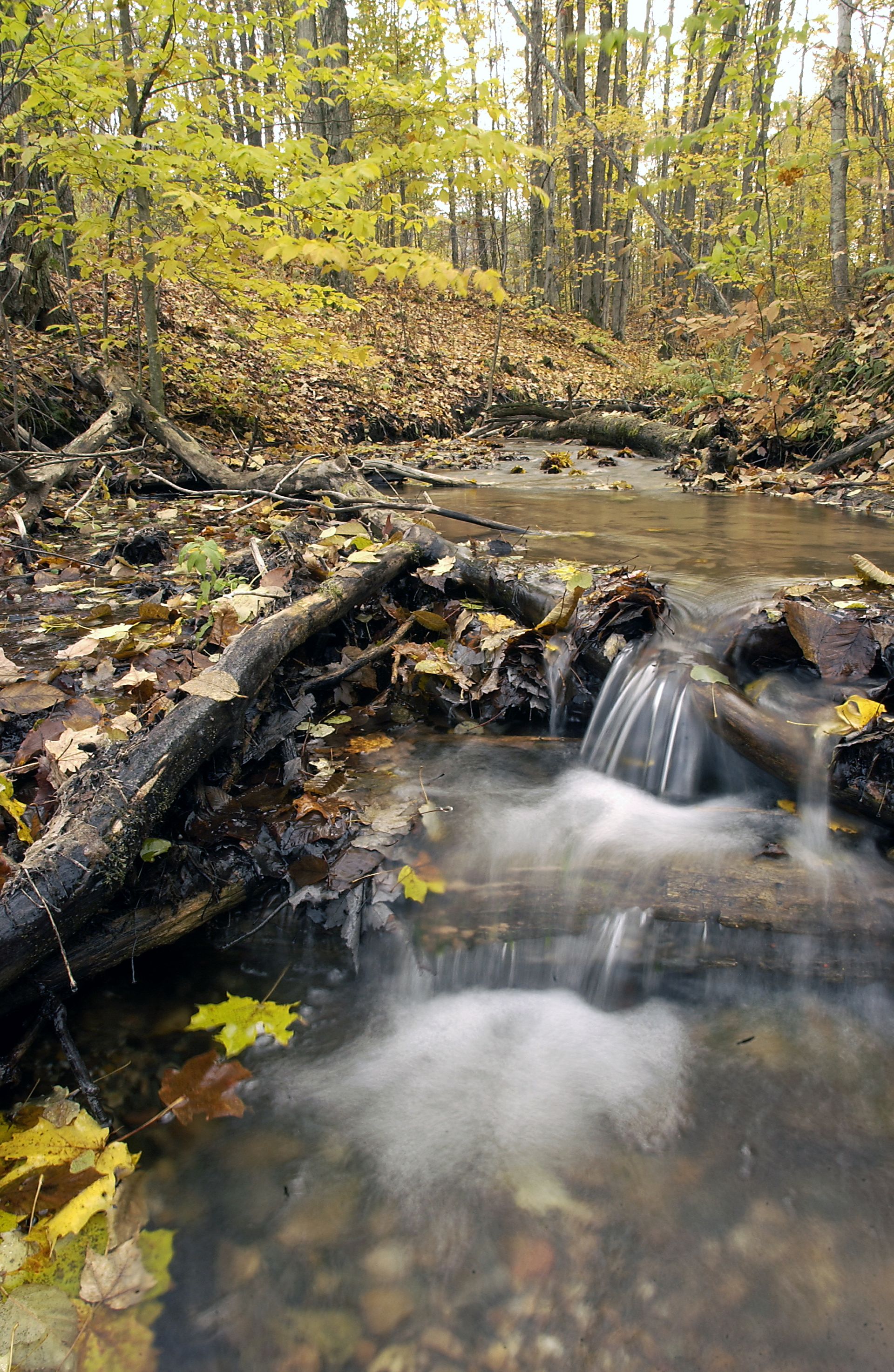Nature's Engineers: North American Beaver
If you have ever seen a pile of sticks and logs covered in mud, impeding the flow of water from one side to the next, it is most often manufactured by a North American beaver. These dams, or lodges, are easily recognized by the public, although many people do not recognize the critical role in the ecosystem these structures play beyond providing shelters for beavers. While this rodent can be a nuisance in some situations, it is truly an ecosystem engineer for many other fish and wildlife species.
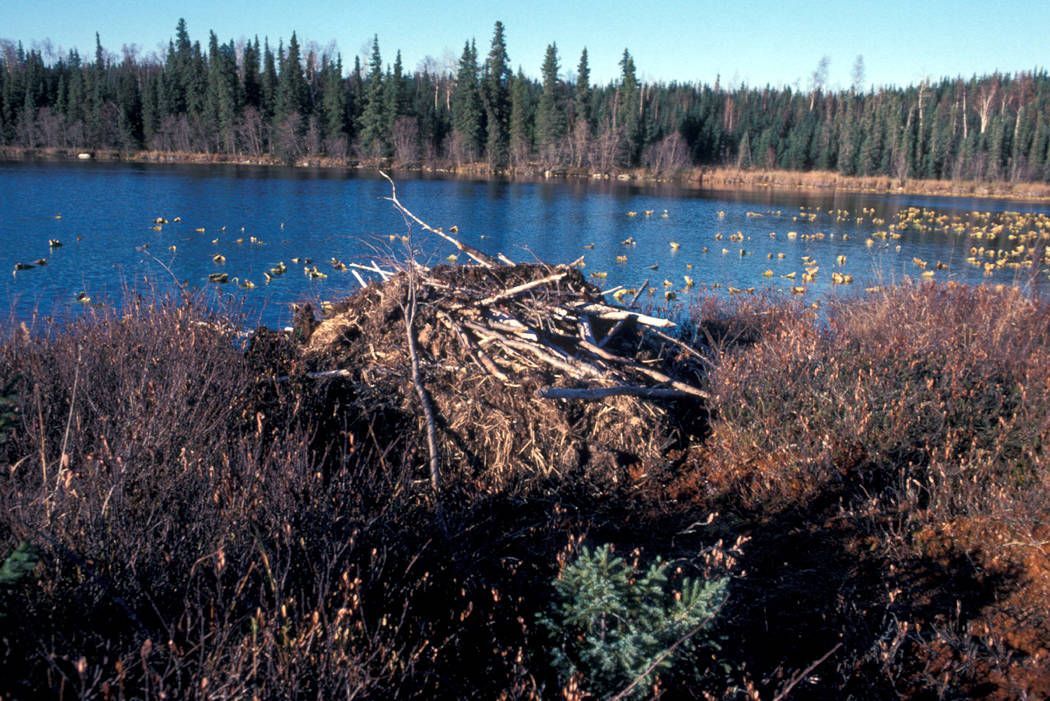
History
The North American beaver (Castor canadensis) was a large part of history for Michigan due to the quality of their fur; even today, trappers hunt this furbearer. However, along with many of the important species in the colonization of the state, the beaver almost reached extinction in the 19th century. The increase of fur harvesting in the area was driven by European fashion and trade, leading up to this time, as recognized by the Huron River Watershed Council.
Current Status
Beavers can be found across the state of Michigan in narrow streams with emergent vegetation nearby for food and alder, aspen, birch, maple, or willow trees within 100 feet of the water for shelter. Today, this species is not endangered or threatened, as the Department of Natural Resources (DNR) reports rebounding numbers of the species in the state.
Characteristics
According to the United States Forest Service, the North American beaver is the largest rodent in the country, reaching up to 4 feet in length and 70 pounds. Most people can identify them by their large, flat tails used for communicating with others about nearby danger or to scare away predators. Being semi-aquatic, the species has brown, thick, coarse fur used to repel water and webbed hind feet for swimming. Beavers are known to live in family colonies in which a breeding pair and previous offspring help raise new kits (young). If a beaver is suspected in an area but there have been no sightings, they can be indirectly associated with an area through their characteristic gnawing of tree trunks used for constructing lodges or simply for the sap.
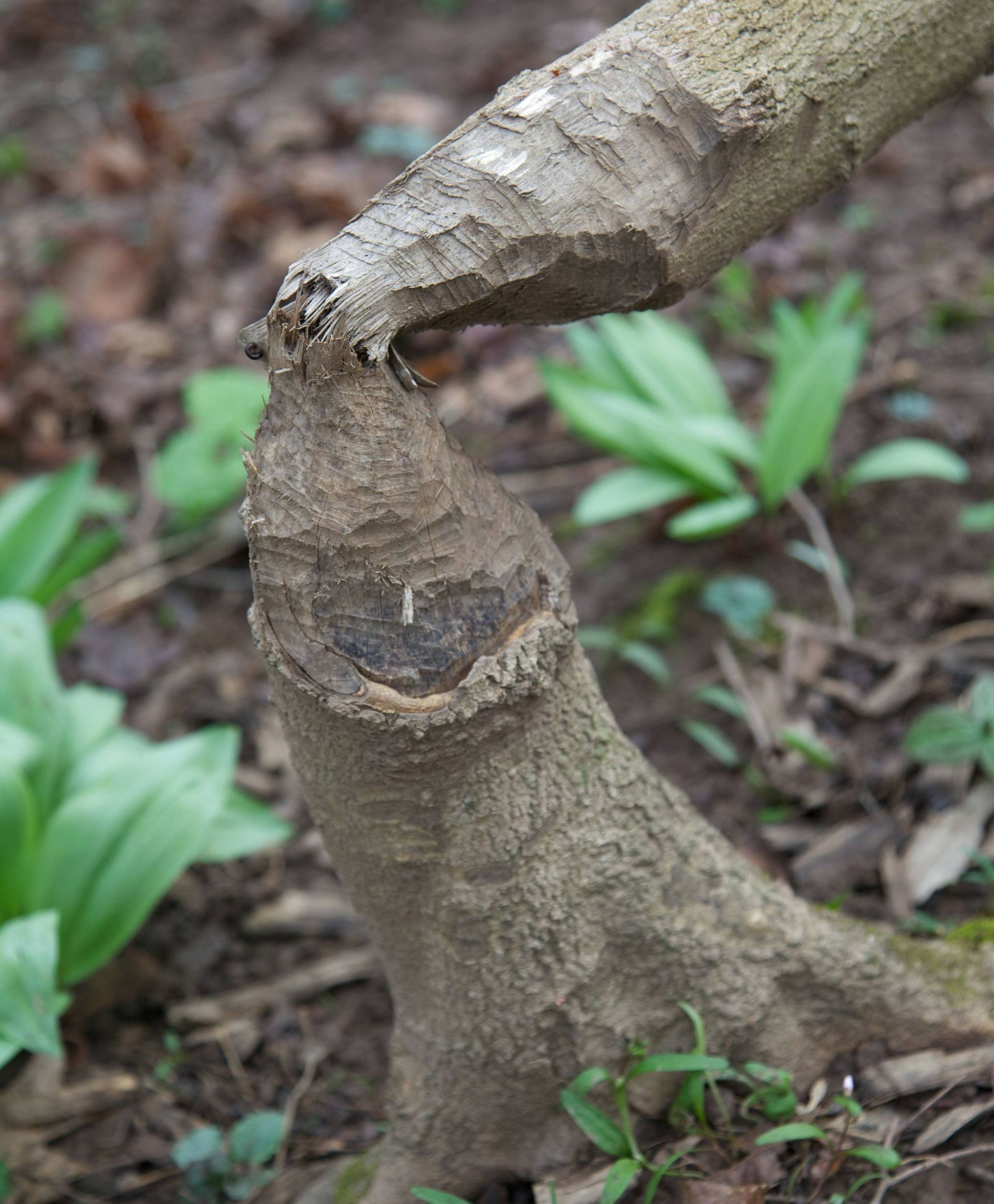
Other aquatic mammals can be confused with beavers to an untrained eye or after a short glimpse. A muskrat is often the most confused aquatic rodent in Michigan; however, this species has a long, skinny rat-like tail, which is a key distinguishing feature as described by the Nature Conservancy. This species is often found during dawn and dusk, whereas the beaver is primarily nocturnal. While muskrats also build lodges, they are mostly built from mud and vegetation instead of the woody debris in a beaver lodge.
Conservation
The National Parks Service recognizes the benefits of erosion control and reduced flooding in certain areas where a beaver dam is built by this keystone species. Although they are changing the environment with the construction, they can improve habitat for wetland fish and wildlife. While the construction of dams contributes to natural ecological disturbance cycles within the native range, these structures can also cause issues for humans. The Michigan DNR discourages the removal of beavers except where necessary to ensure the ecosystem remains balanced. Woodcock management units, areas within the State Forest Management Plan, and wildlife division project areas are all managed for beaver habitat as the presence of this species impacts each of these areas. American woodcock, golden-winged warbler, moose, pileated woodpecker, red-headed woodpecker, red-shouldered hawk, and wood duck are considered incidental species by the DNR when considering beaver habitat management, as they can indirectly benefit from conservation strategies.
When these large rodents become a nuisance, they can be discouraged from an area through limiting food sources, protecting trees with flashing, or excluding culverts. If the species is not deterred by these alterations to the landscape, the DNR can offer permits to destroy dams when the beaver is a nuisance. If the beaver dam is too large, the Department of Environment, Great Lakes, and Energy can offer a removal permit that requires tool use. An alternative to the direct removal of the dam can be the installation of a pond leveling device. Additionally, beavers can be trapped in legal areas with a base license and a fur harvester license. As of 2024, beavers can be trapped year-round using legal methods if they are causing or can potentially cause damage to private property, according to the 2024 harvest regulations. Third-party trappers like the Michigan Trappers and Predator Callers Association or a nuisance wildlife removal company may be able to trap as well.
Learn More
If you are interested in learning more about harvesting furbearers in Michigan, information like season dates and regulations can be found in the 2024 Furbearer Harvest Regulations Summary. Some counties have restrictions on species trapping, so it is best to consult this summary annually. More species that look similar to the beaver, with additional information, can be found at The Nature Conservancy. Additional information about the role beavers play in the ecosystem can be found at the Huron River Watershed Council.
Recent Posts


